
Martin Schadt (born 1938) is a Swiss physicist and inventor.

Martin Schadt (born 1938) is a Swiss physicist and inventor.
In 1970, the physicists Martin Schadt and Wolfgang Helfrich invented the twisted nematic field effect (TN-effect) in the Central Research Laboratories of F. Hoffmann-La Roche Ltd, in Basel, Switzerland. The resulting patent CH532261 was licensed worldwide to electronics and watch industries and thus initiated a paradigm change towards flat panel field effect liquid crystal (LC) displays.
In the early 1970s, Martin Schadt started to investigate correlations between liquid crystal molecular structures, material properties, electro-optical effects and display performance to obtain criteria for novel, effect-specific liquid crystal materials for TN- and subsequent field-effect applications. His interdisciplinary approach involving physics and chemistry became the basis for modern industrial LC-materials research and led to the discovery and production of numerous new functional molecules and new electro-optical effects. In 1970, shortly after the invention of the TN-effect, he developed the first commercial room temperature nematic liquid crystal mixture with positive dielectric anisotropy, [1] used in the displays of the first Japanese digital TN-LCD watches. The pharmaceutical company Roche established itself as a major supplier of liquid crystal materials for the emerging LCD-industry.
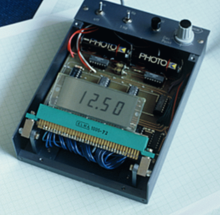
Apart from his pioneering work on the TN-effect (i.e.e twisted nematic field effect), novel liquid crystal materials, organic semiconductors and biophysics, he invented or co-invented the following effects and technologies:
As principal inventor and head of Roche LC research he promoted the development of LPP-Photoalignment into manufacturing (1992–2002). As a key technology it enables contact free alignment and photo-patterning of monomeric and polymeric liquid crystals by optical means instead of mechanically. This has opened up novel display configurations as well as a wide range of new optical thin-film elements on single substrates, such as LC-interference color filters, optical retarders, cholesteric optical filters, wide-view films to enhance the field of view of LCDs, novel optical security elements for document and brand protection, stereo-polarizers as well as nano-and micro-corrugated optical polymer thin-film elements enabling polymeric antireflective and directional light scattering coatings.
The molecular design approach of Martin Schadt and his team has led to the discovery, patenting and production of the following commercially important liquid crystal classes: alkyl cyano Schiff'bases and esters (1971), [2] phenyl-pyrimidines (1977), alkenyl liquid crystals which have become key for all state-of-the-art high-information content LCDs (1985–1995), numerous halogenated liquid crystals (1989–1995) as well as the first strongly non-linear optical (NLO)-ferroelectric liquid crystals (1992).
Until 1994 Martin Schadt was the head of the Liquid Crystal Research division of F. Hoffmann-La Roche Ltd. As a spin-off from Hoffmann-La Roche in 1994 he founded the interdisciplinary research and development company ROLIC Ltd. From 1994 until his retirement from the operating business in October 2002 Martin Schadt was CEO of ROLIC Ltd. and delegate of the board of directors. He retired from ROLIC in 2005 and is now active as a scientific advisor to various research groups and governmental agencies.
{{cite book}}: CS1 maint: location missing publisher (link)
A liquid-crystal display (LCD) is a flat-panel display or other electronically modulated optical device that uses the light-modulating properties of liquid crystals combined with polarizers. Liquid crystals do not emit light directly but instead use a backlight or reflector to produce images in color or monochrome.
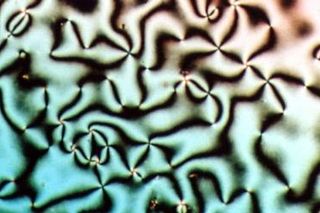
Liquid crystal (LC) is a state of matter whose properties are between those of conventional liquids and those of solid crystals. For example, a liquid crystal can flow like a liquid, but its molecules may be oriented in a common direction as in a solid. There are many types of LC phases, which can be distinguished by their optical properties. The contrasting textures arise due to molecules within one area of material ("domain") being oriented in the same direction but different areas having different orientations. An LC material may not always be in an LC state of matter.
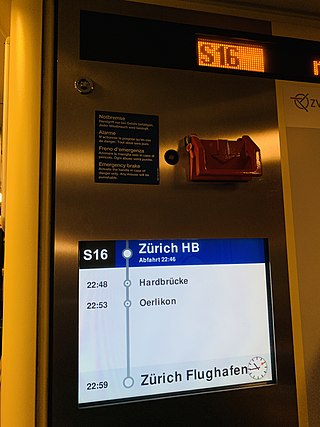
A flat-panel display (FPD) is an electronic display used to display visual content such as text or images. It is present in consumer, medical, transportation, and industrial equipment.

An LCD projector is a type of video projector for displaying video, images or computer data on a screen or other flat surface. It is a modern equivalent of the slide projector or overhead projector. To display images, LCD projectors typically send light from a metal-halide lamp through a prism or series of dichroic filters that separates light to three polysilicon panels – one each for the red, green and blue components of the video signal. As polarized light passes through the panels, individual pixels can be opened to allow light to pass or closed to block the light. The combination of open and closed pixels can produce a wide range of colors and shades in the projected image.
A thin-film-transistor liquid-crystal display is a type of liquid-crystal display that uses thin-film-transistor technology to improve image qualities such as addressability and contrast. A TFT LCD is an active matrix LCD, in contrast to passive matrix LCDs or simple, direct-driven LCDs with a few segments.
A STNdisplay is a type of liquid-crystal display (LCD). An LCD is a flat-panel display that uses liquid crystals to change its properties when exposed to an electric field, which can be used to create images. This change is called the twisted nematic (TN) field effect. Earlier TN displays twisted the liquid crystal molecules at a 90-degree angle. STN displays improved on that by twisting the liquid crystal molecules at a much greater angle, typically between 180 and 270 degrees. This allows for a sharper image and passive matrix addressing, a simpler way to control the pixels in an LCD.
James Lee Fergason was an American inventor and business entrepreneur. A member of the National Inventors Hall of Fame, Fergason is best known for his work on an improved Liquid Crystal Display, or LCD. He held over one hundred U.S. patents at the time of his death.
Edward Peter Raynes is Professor of Optoelectronic Engineering at the University of Oxford. He was, and continues to be, an early developer and advocate of liquid crystal displays (LCDs).

The twisted nematic effect (TN-effect) was a major technological breakthrough that made the manufacture of large, thin liquid crystal displays practical and cost competitive. Unlike earlier flat-panel displays, TN-cells did not require a current to flow for operation and used low operating voltages suitable for use with batteries. The introduction of TN-effect displays led to their rapid expansion in the display field, quickly pushing out other common technologies like monolithic LEDs and CRTs for most electronics. By the 1990s, TN-effect LCDs were largely universal in portable electronics, although since then, many applications of LCDs adopted alternatives to the TN-effect such as in-plane switching (IPS) or vertical alignment (VA).
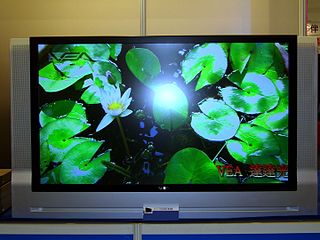
Large-screen television technology developed rapidly in the late 1990s and 2000s. Prior to the development of thin-screen technologies, rear-projection television was standard for larger displays, and jumbotron, a non-projection video display technology, was used at stadiums and concerts. Various thin-screen technologies are being developed, but only liquid crystal display (LCD), plasma display (PDP) and Digital Light Processing (DLP) have been publicly released. Recent technologies like organic light-emitting diode (OLED) as well as not-yet-released technologies like surface-conduction electron-emitter display (SED) or field emission display (FED) are in development to supersede earlier flat-screen technologies in picture quality.
A blue phase mode LCD is a liquid crystal display (LCD) technology that uses highly twisted cholesteric phases in a blue phase. It was first proposed in 2007 to obtain a better display of moving images with, for example, frame rates of 100–120 Hz to improve the temporal response of LCDs. This operational mode for LCDs also does not require anisotropic alignment layers and thus theoretically simplifies the LCD manufacturing process.
There are various classifications of the electro-optical modes of liquid crystal displays (LCDs).
Ferroelectric liquid crystal display (FLCD) is a display technology based on the ferroelectric properties of chiral smectic liquid crystals as proposed in 1980 by Clark and Lagerwall. Reportedly discovered in 1975, several companies pursued the development of FLCD technologies, notably Canon and Central Research Laboratories (CRL), along with others including Seiko, Sharp, Mitsubishi and GEC. Canon and CRL pursued different technological approaches with regard to the switching of display cells, these providing the individual pixels or subpixels, and the production of intermediate pixel intensities between full transparency and full opacity, these differing approaches being adopted by other companies seeking to develop FLCD products.
Electrically operated display devices have developed from electromechanical systems for display of text, up to all-electronic devices capable of full-motion 3D color graphic displays. Electromagnetic devices, using a solenoid coil to control a visible flag or flap, were the earliest type, and were used for text displays such as stock market prices and arrival/departure display times. The cathode ray tube was the workhorse of text and video display technology for several decades until being displaced by plasma, liquid crystal (LCD), and solid-state devices such as thin-film transistors (TFTs), LEDs and OLEDs. With the advent of metal–oxide–semiconductor field-effect transistors (MOSFETs), integrated circuit (IC) chips, microprocessors, and microelectronic devices, many more individual picture elements ("pixels") could be incorporated into one display device, allowing graphic displays and video.
IPS is a screen technology for liquid-crystal displays (LCDs). In IPS, a layer of liquid crystals is sandwiched between two glass surfaces. The liquid crystal molecules are aligned parallel to those surfaces in predetermined directions (in-plane). The molecules are reoriented by an applied electric field, while remaining essentially parallel to the surfaces to produce an image. It was designed to solve the strong viewing angle dependence and low-quality color reproduction of the twisted nematic field effect (TN) matrix LCDs prevalent in the late 1980s.
Wolfgang Helfrich is a German physicist and inventor recognized for his contributions to twisted-nematic liquid crystal technology, which is used to produce a variety of modern LCD electronic displays.

Guest Host Displays, Dichroic Displays, Polymer Dispersed Displays
Photoalignment is a technique for orienting liquid crystals to desired alignment by exposure to polarized light and a photo reactive alignment chemical. It is usually performed by exposing the alignment chemical to polarized light with desired orientation which then aligns the liquid crystal cells or domains to the exposed orientation. The advantages of photoalignment technique over conventional methods are non-contact high quality alignment, reversible alignment and micro-patterning of liquid crystal phases.
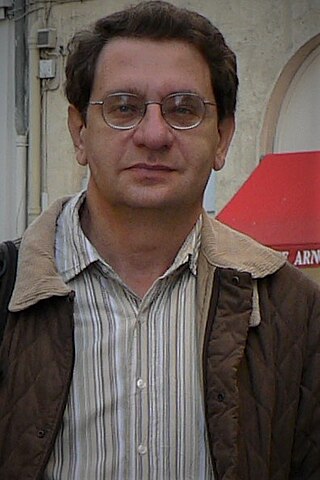
Yuriy Reznikov was a Ukrainian physicist, Head of the Department of Crystals at NASU Institute of Physics and a world-renown expert in the field of liquid crystals. He is known for his work on photoalignment, "giant" optical non-linearity of liquid crystals and nano-colloids.

Peter J. Wild is a Swiss electronics engineer and a pioneer of liquid-crystal display (LCD) technology.